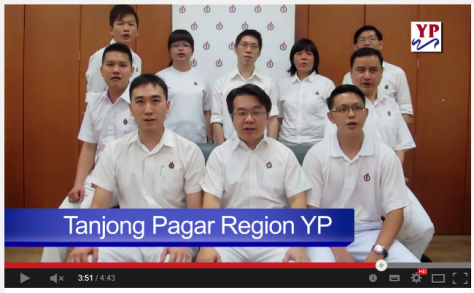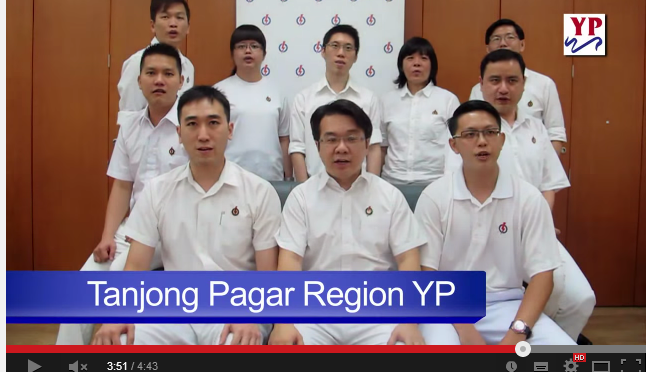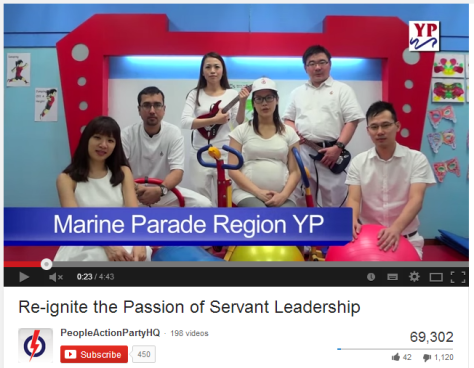Editors Note:
This post is written entirely for learning purposes. Any sarcasm and cynical comments found herein are included for entertainment purposes, and not meant to offend.
[C’mon… give me a break I head to go through the video 5 times!]
Click here to launch the video
===========================================
[5 minutes 46 seconds, if you average 3 words per second]
By now, if you live in Singapore, or have friends who are Singaporeans – you would have heard about the latest video controversy making its round on the internet.
I was asked by a local news paper, The New Paper to give my views on the video and the reasons for the reception it received.
Here’s my take on the misses and hits, and what we can learn from it.
MISSES:
1) Robotic “Personalities”
Go through the first 40 seconds of the video, and you’ll see bodies people largely standing still. Even for people who speak, their gestures and mannerisms appear largely controlled.
Having worked in front of the camera, I’m aware of the need to minimize distracting mannerisms.
Unfortunately, minimizing mannerisms in this case has swung to the other extreme, causing a number of people in the video to appear contrived and “emotionless”.
What really stood out for me, is how one person, apart from his/her voice, speaks and sounds almost the same as the other person – how’s that for personality and personalization?
What could’ve been better: Variation in tone, pace and hand gestures would’ve broken the seeming monotony of “robotic personalities”. They key is to present one’s personality and energy.
2) Synchronized Movement: An Irony of Preparation
This is probably a sad irony of preparation. Where an audience demands sincerity and connection with the people who may eventually be their leaders, synchronized gestures throughout the video (ie, at 0:26s) suggests a rehearsed attempt and hardly suggests that actions from the activists (pardon the pun) “came from the bottom of the heart”.
Even the following segment by the West Coast Region YP, an apparent attempt at presenting a united front – backfired, when the actions appeared overly orchestrated.
Tanjong Pagar Region YP (3:44) upped the ante with their segment with an even more uniformed recital of what they wanted to say and with their eyes all over the place except the camera.

What could’ve been better: Have close ups of individual activists from within the group, present shortened, specific segments. So everybody gets air time, but there’s less “group” coordination required for the recital.
It’s also perfectly fine to look at the camera to simulate eye contact with the audience.
By the way, having one’s eyes moving systematically, from left to right gives people the perception that you’re reading off a script/teleprompter and not speaking from the heart… so doing that is also highly discouraged.
It’s hard to convince people that you truly believe in and care for something, when the delivery appears to be devoid of emotion, scripted and prepared.
3) Language: Can you Connect with the Common Man?
I noted a couple of instances, when the words used by the presenters weren’t naturally relatable to or immediately understandable by the man on the street.
In short, we don’t use them as part of of our daily conversations.
Take for example the segment presented by Holland-Bukit Timah Region, where it was said, “We must continue to be responsive to the ever-changing social, political and economic environment, by distributing resources in a caring manner, and balancing market forces and government intervention for Singaporeans to better cope with living expenses.
That’s a lot of big words there.
Instead of that, how about, “We must continue to be sensitive to the needs of Singaporeans – by sharing with them the fruits of the country’s labour and help them with the costs and challenges of living.
(I don’t like the word “challenging” here… but hey, I came this at the top of my head and it’s still better than the original version, no?)
Then there are terms that even I find confusing… such as East Coast Region YP’s “Diversity in Social Mindset” – I understood the explanation that came after the term… but I did find myself scratching my head wondering why that can’t be replaced with the phrase “Having more members from more diverse backgrounds” (… other than doctors, lawyers, etc).
If only the other YP branches heeded the advice of Choa Chu Kang Region YP, who called for communication to be simple, concise and easy to understand…
===============================================
Okay, now that I’m done with the misses… let’s consider the hits.
Content: Pretty sound there – there’re no surprises here. Every thing is spic and span and no controversy erupted over a message that could’ve been misconstrued etc. At least the PAP doesn’t have to be embarrassed by a message.
Party Discipline: Say what you like, the teams still pulled together to deliver a consistent message/direction is still commendable. Achieving that by itself is a feat, considering the massive machinery that is the PAP.
A for Effort and Putting Yourself Out There: Trying to be ‘natural’ and coordinated… you’ve got to say, the people tried and they’re really NOT actors!
It would be great if the speakers could achieve the level of unconscious competency in the area of public speaking, communication and connecting with their audience.
Hey guys… just in case you’re wondering where you can learn that, I know of a coach who does a great job at helping people with that! *winks*
===============================================
Summary:
To be fair, I truly believe getting the different branches to send in a “proper” video for compilation is a mammoth task.
The PAP, known more for its discipline accuracy (think engineers and lawyers) and assuming the role of the ruling party would naturally place greater emphasis on the content of its message.
Still, try as they like, the call for people to focus on intention and the message is expected… but will very likely fall on deaf ears.
After all, people don’t care how much you know, until they know how much you care.
Therefore, although I believe that there exists real concern (and passion) hidden under the cloak of nervousness and unrefined performance, the art of communication and connecting with the audience is a skill the PAP needs to work on, if they wish to really soften the blow of their (hard) policies and move the audience into believing that they know what’s best.











